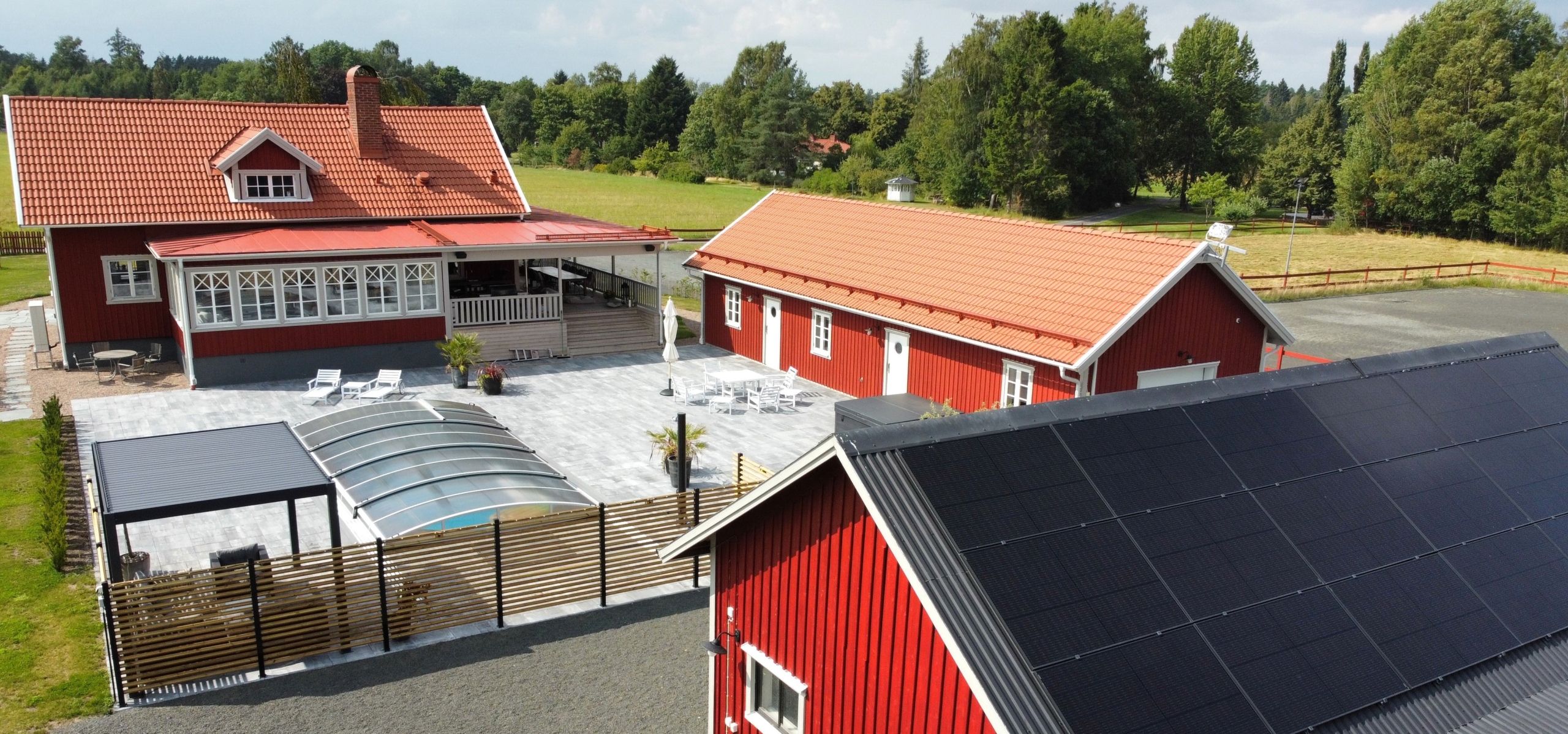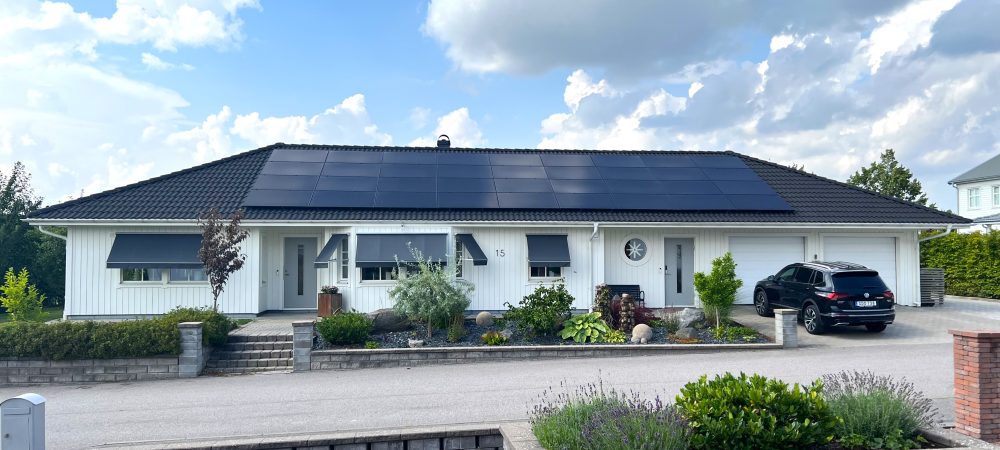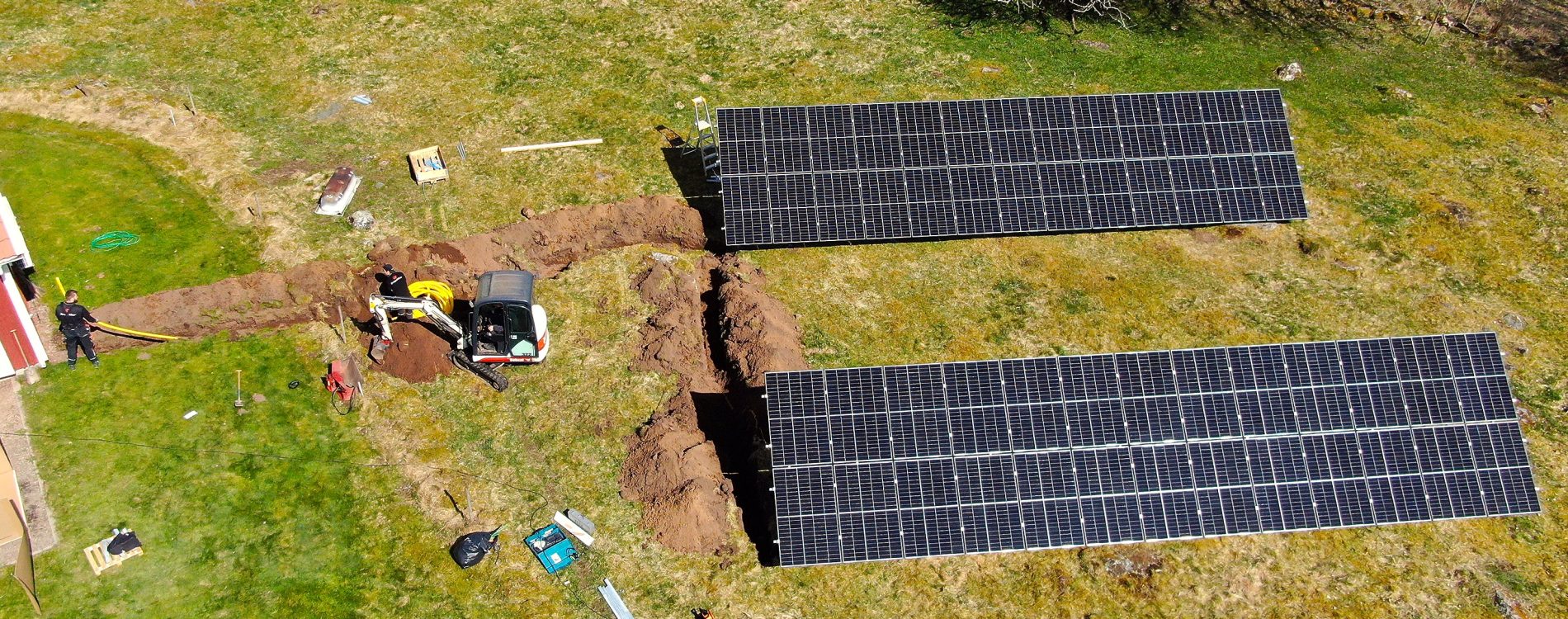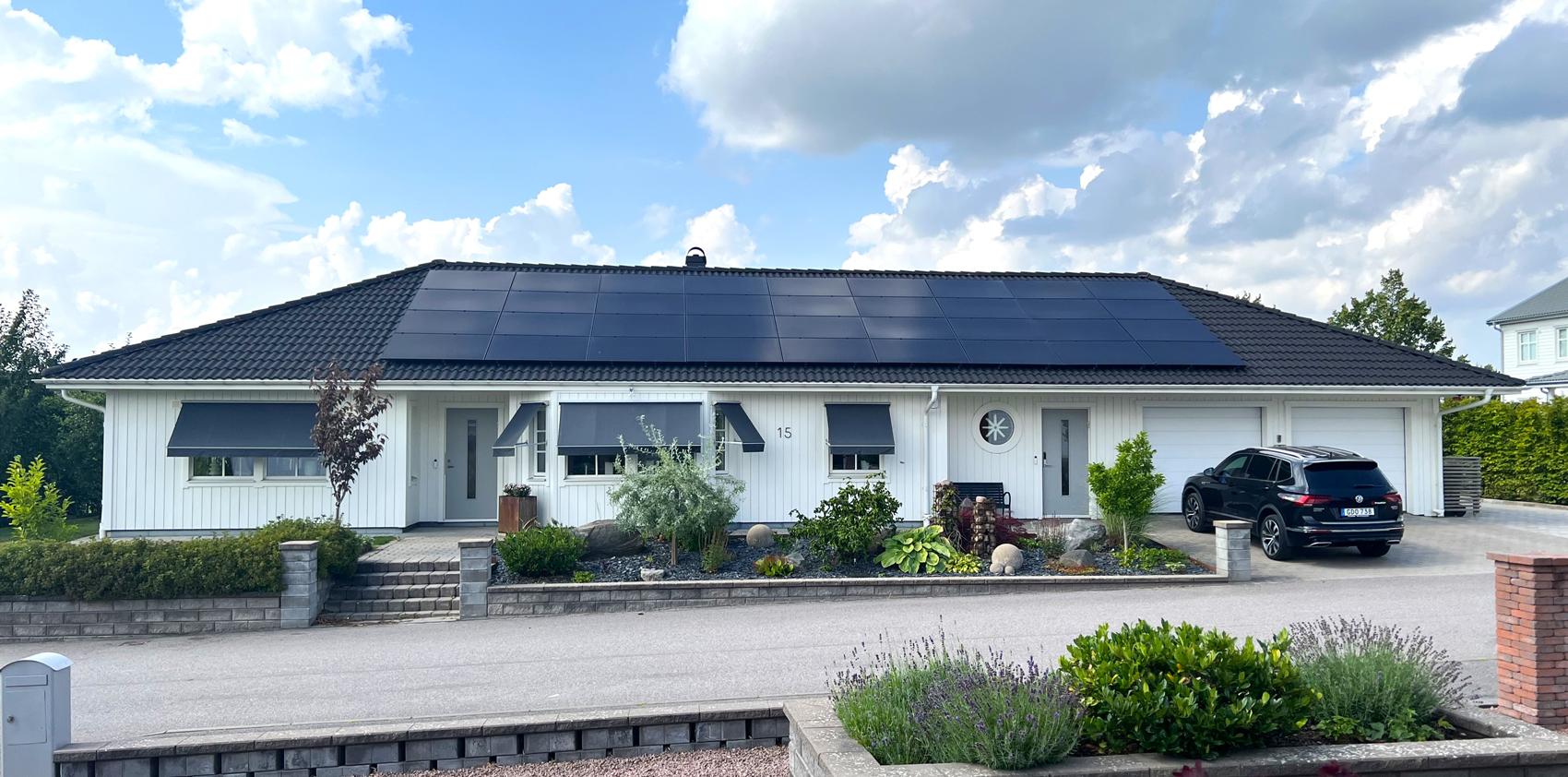
Solar energy for individuals
Here you will find most of what you need to know about solar energy solutions for private homes. At the bottom you will find an extensive FAQ section that may be of interest to professionals as well.
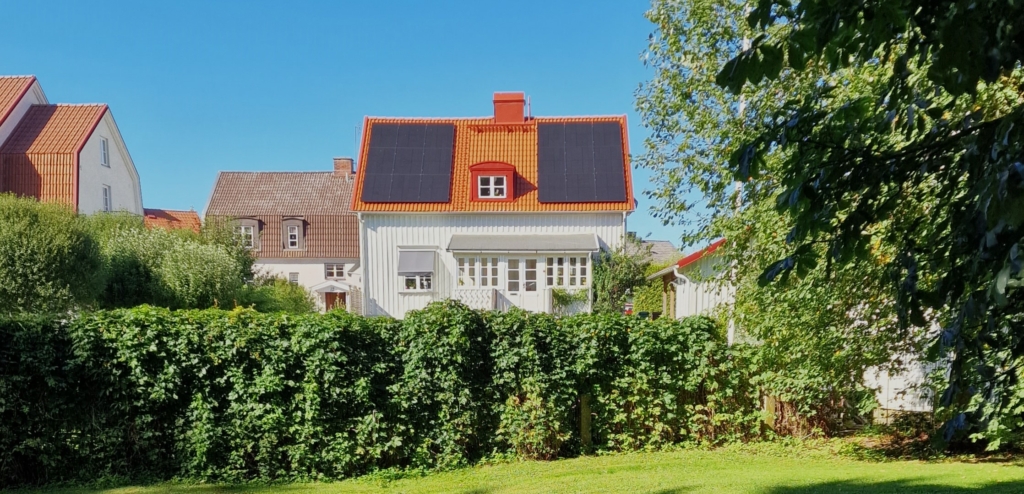
Solar energy for your home
Rooftop solar is a mature technology with well-proven systems that are more interesting than ever - because the only thing we can be reasonably sure about future energy prices is that they will probably be significantly higher. The contributing factors are many. We in Sweden are now connected to the European electricity market, which is characterized by less and less regulated energy (such as nuclear power). There is also a desire to reduce gas imports, while the transport sector is being rapidly electrified - and here at home we are facing huge, electricity-dependent industrial investments. They are all competing with you and all other households for the electricity available on the market, resulting in ever higher prices.
Service visit - ensure maximum output of your solar power system
Your PV installation is an important investment that takes care of itself - but not completely! To ensure optimal production and safe operation, both we and the the Electrical Safety Authority regular maintenance.
Why a service visit?
- Detect and fix wear and tear in time.
- Ensure that cabling and the plant are in top condition.
- Extend the lifespan and optimize production.
- Thermal review with thermal camera & drone (optional)
Our electricians go through your entire plant and deliver a detailed report with any action suggestions - all so that you get the most out of your solar energy!
Measures that are needed of a minor nature and can be remedied directly on site with the materials and tools available, the electrician will do this. If the error cannot be remedied directly, we will return with a cost estimate and book a time for when the error can be remedied.
We are happy to tell you more! Contact Andreas or Jesper - They start by familiarizing us with the facts about your solar cell system, small or large, and then proceed with a customized approach.
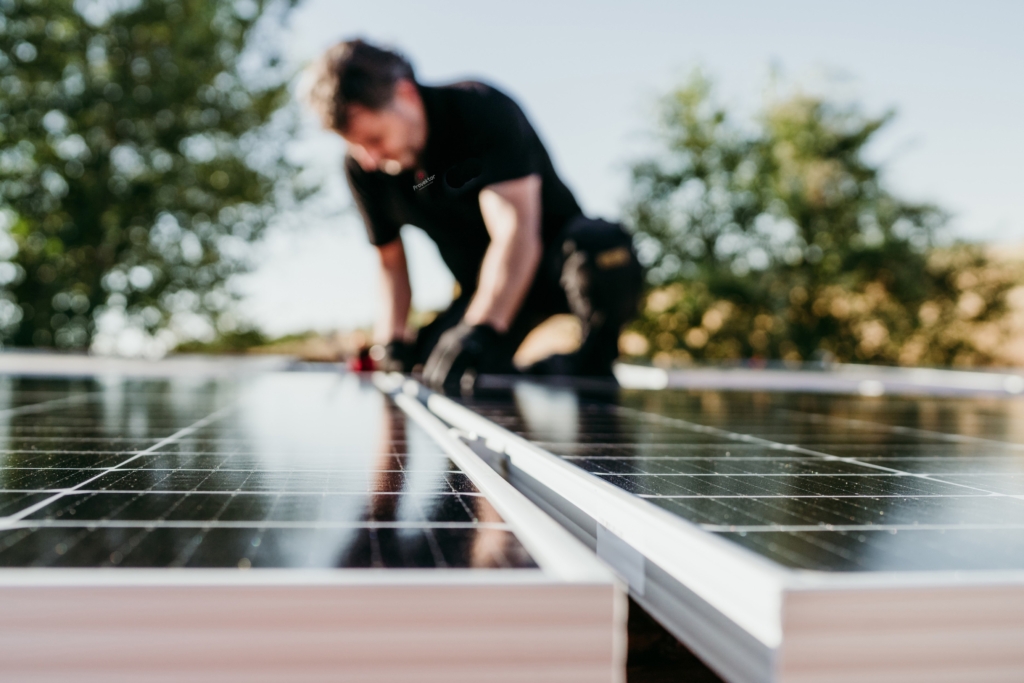
Efficient investment
An increasing number of electricity suppliers and network companies now charge extra for maximum monthly power and are increasingly moving to hourly billing. This can mean higher electricity bills for many people, as much of the electricity consumption must take place during the daytime - who wants to cook or get up and empty the washing machine in the middle of the night? Often, electric car charging is the only consumption that can be switched to the low-price hours.
Higher electricity prices, combined with increasingly efficient photovoltaic technology, have therefore meant that in just a few years, investing in your own solar power has gone from being an idealist project to a sound investment that pays off quite quickly - especially with the new tax reduction opportunities for installing green technologies.
Cut power peaks - Reduce your electricity costs - Sell the surplus - Increase the value of your house
Solar panels with optimized energy economy
So installing solar panels has never been as obvious a decision as it is today. But it's not about installing as many panels as you can fit on your roof. It's about optimizing the yield for the best possible combination of your own use and saleable surplus in relation to the investment you make - and to the conditions set by your electricity supplier and your grid company, today and in the future.
There is a lot to think about: What is your consumption over the day and year? Is your heating system electricity dependent? Is it best to have panels lying flat on the roof - or angled upwards? Maybe on the façade instead of the roof? Does your local grid company have any restrictions on connecting new solar panels to the grid? How does the price you get for the surplus electricity fed into the grid depend on whether you have a fixed or variable electricity price contract? Do solar panels mean you can choose a smaller main fuse to get a lower fixed tariff? And so on.
In short, you need a competent supplier to guide you past the pitfalls, one that knows the local conditions, one that helps you with all the calculations and knows which components are best suited to your house and your needs.

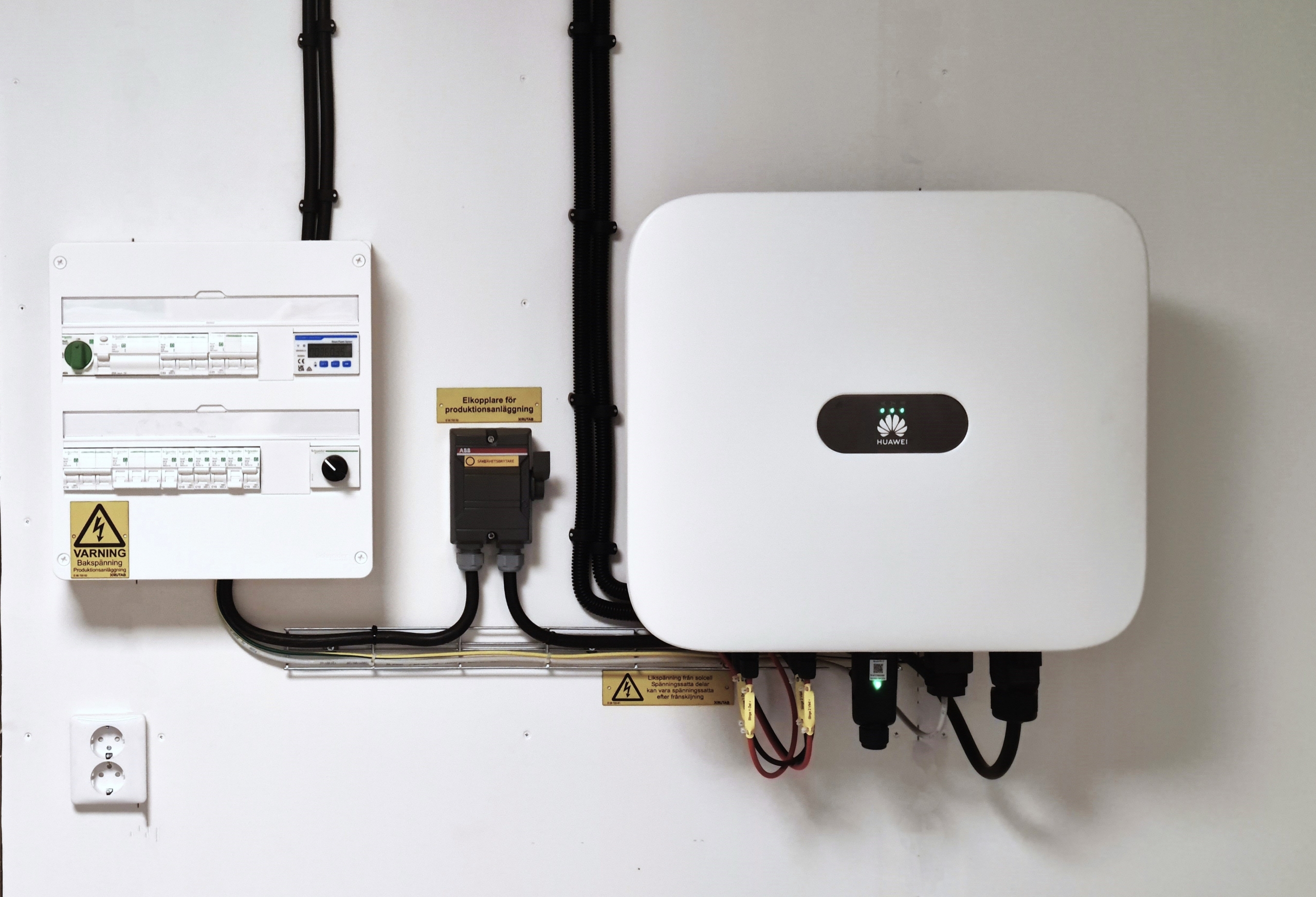
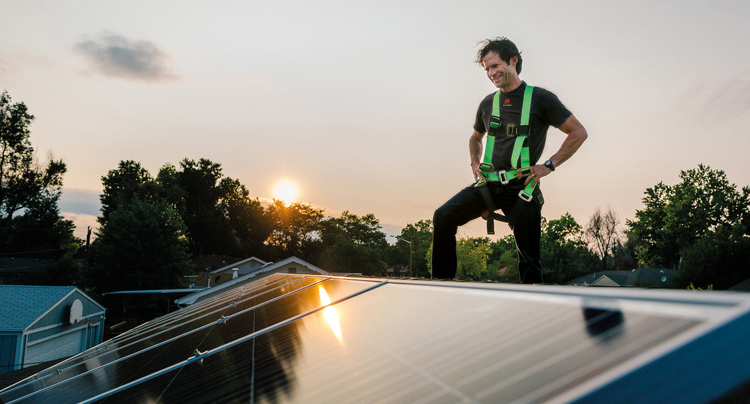
Battery storage for residential properties
With battery electricity storage, a solar PV system can go from being a profitable addition to a truly efficient solution that may even make you independent of the grid for much of the year. With a battery, you can store excess electricity for use when it is most needed, to become as self-sufficient as possible. Top up the batteries during the day and use the electricity to charge your car at night, and so on. For the consumer market, battery solutions are available to store up to 20 kWh or even more, which means that the solar panels can cover the 24-hour household electricity needs of a normal home even in winter.
With a well-designed battery, you can take advantage of hourly price variations across the day to automatically buy or sell electricity to or from the grid when it makes the most sense. You can also cut peak power and thereby reduce your costs for subscribed peak power. We are happy to help you calculate whether a battery investment is worthwhile for your house!
Decreasing shares of dispatchable power in the electricity mix also puts a lot of strain on the grid as demand and supply become harder to balance. If you have a battery in your photovoltaic system, you can help balance the supply for the grid as a whole - and get paid for your help.
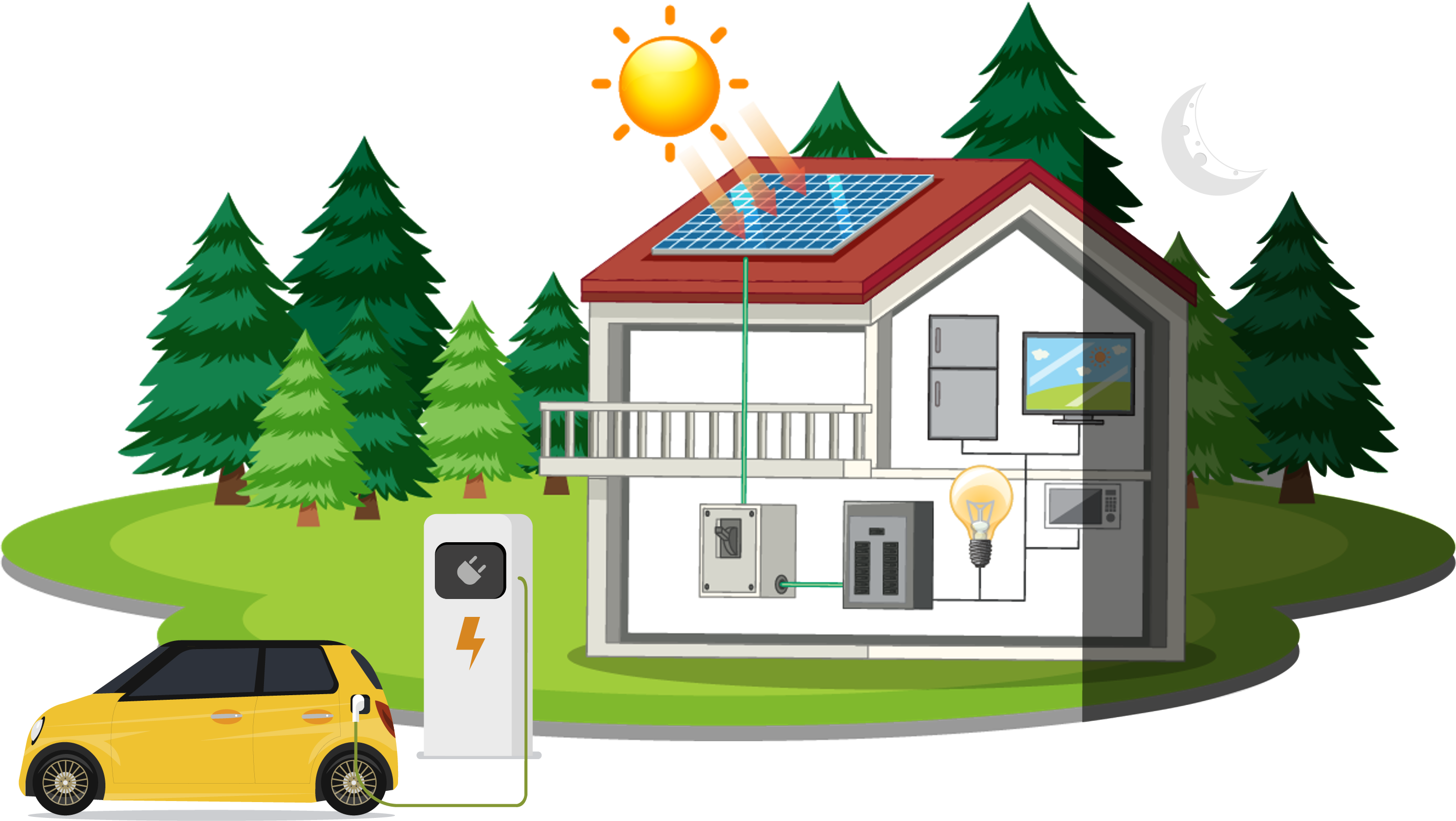
From idea to operational plant
We at Provektor make it simple and easy for you to become your own electricity producer. We start with a visit where we go through your conditions and wishes. Then we develop a system proposal and a quote. When we agree, we start the installation and handle all contacts with your grid company - and help you apply for a tax reduction for green technology.
All work is carried out by our qualified fitters and electricians who have extensive experience of installing solar panels. Once the grid company has carried out its checks, you can start enjoying self-generated electricity with a clear conscience! Get in touch and we'll work out what's best for you.
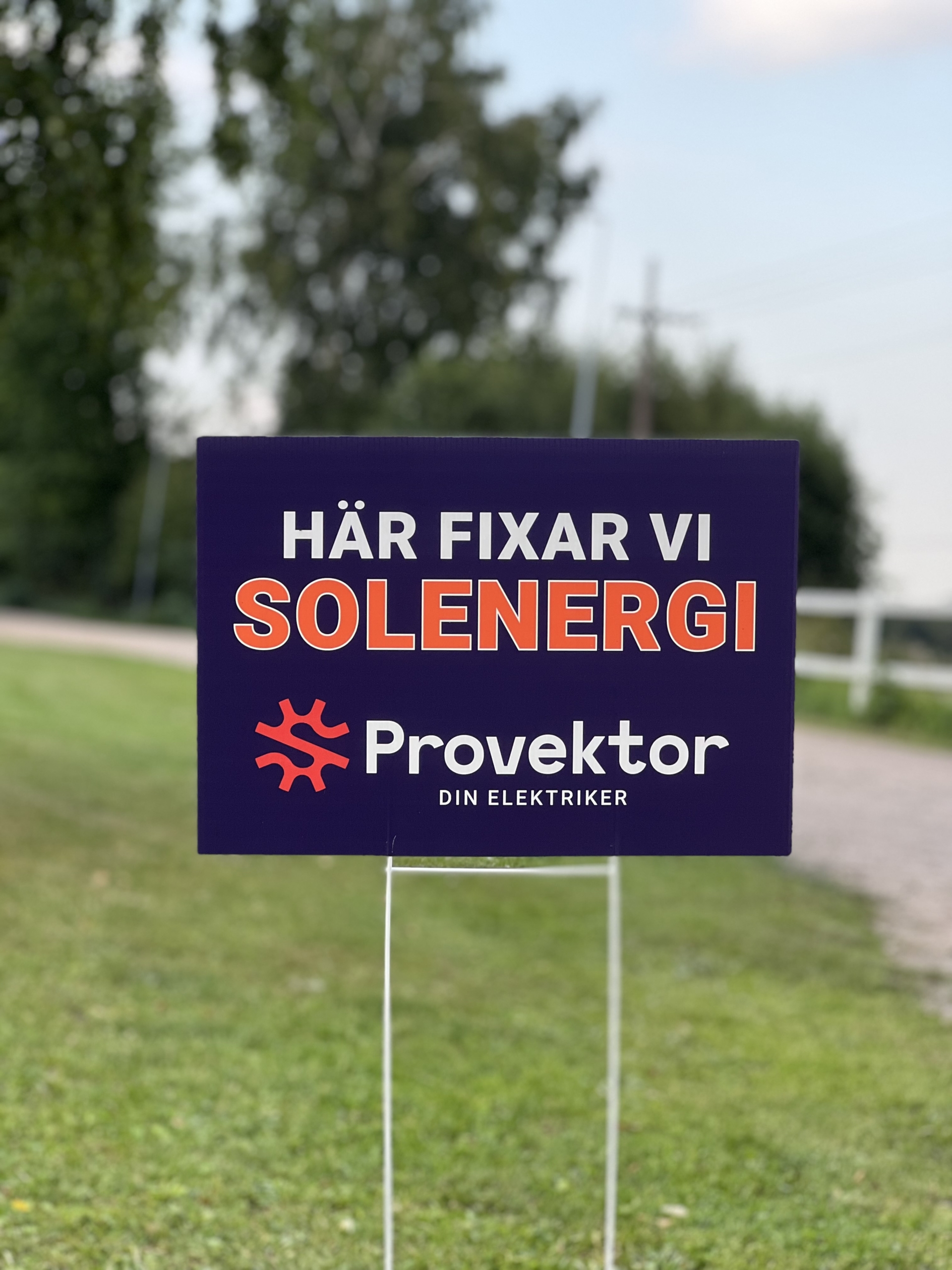
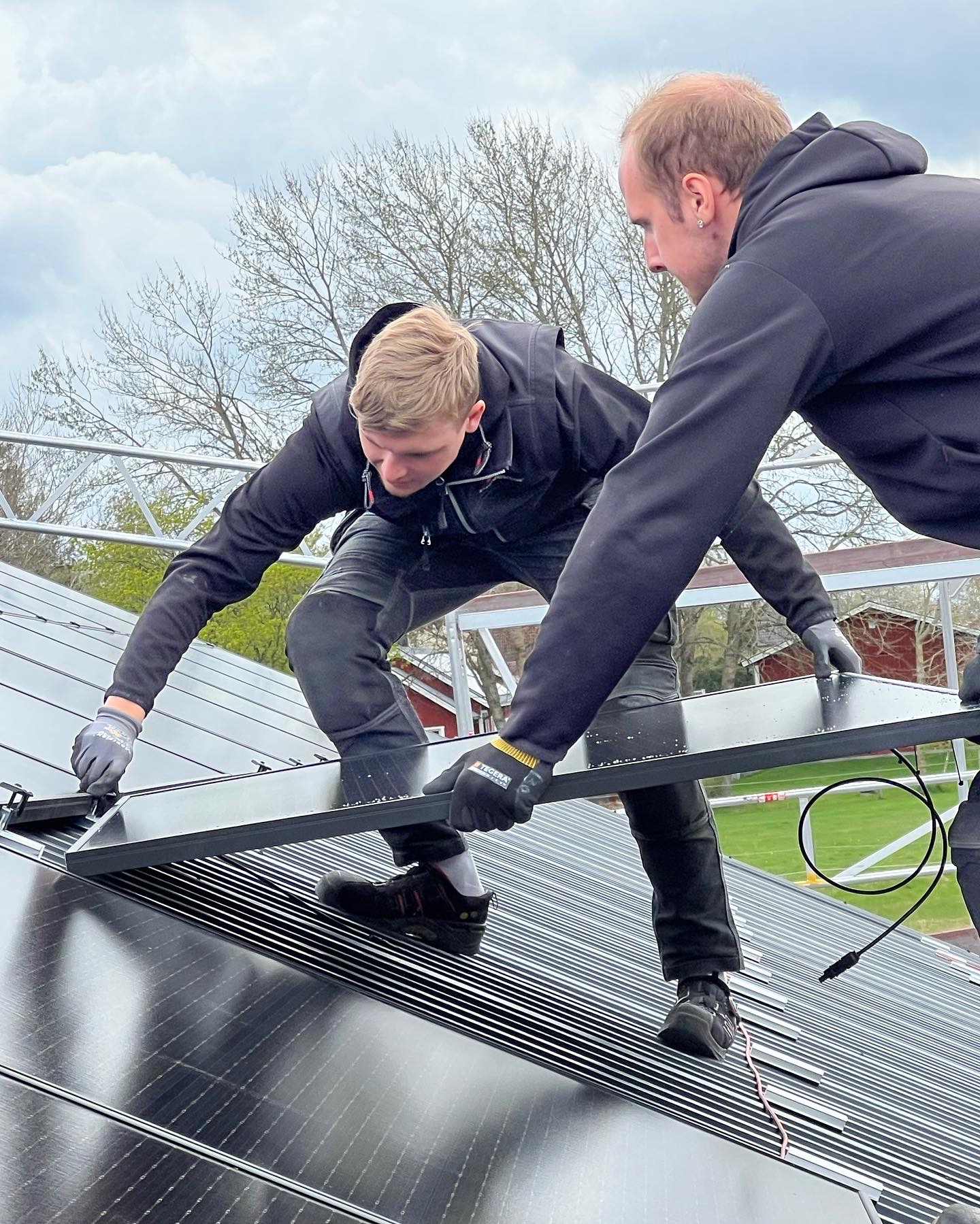
Tax credits for green technologies
Similar to the ROT deduction, you can get money back on your taxes when you install green technologies. It currently provides a tax reduction of 20% of the cost for solar energy installations and 50% for battery storage and vehicle charging solutions. The deductions are made directly on the invoice, but keep in mind that you must pay enough tax up front to avoid being liable for a refund of part of the sum.
Read more about the Green Technology Deduction at the Swedish Tax Agency !
References
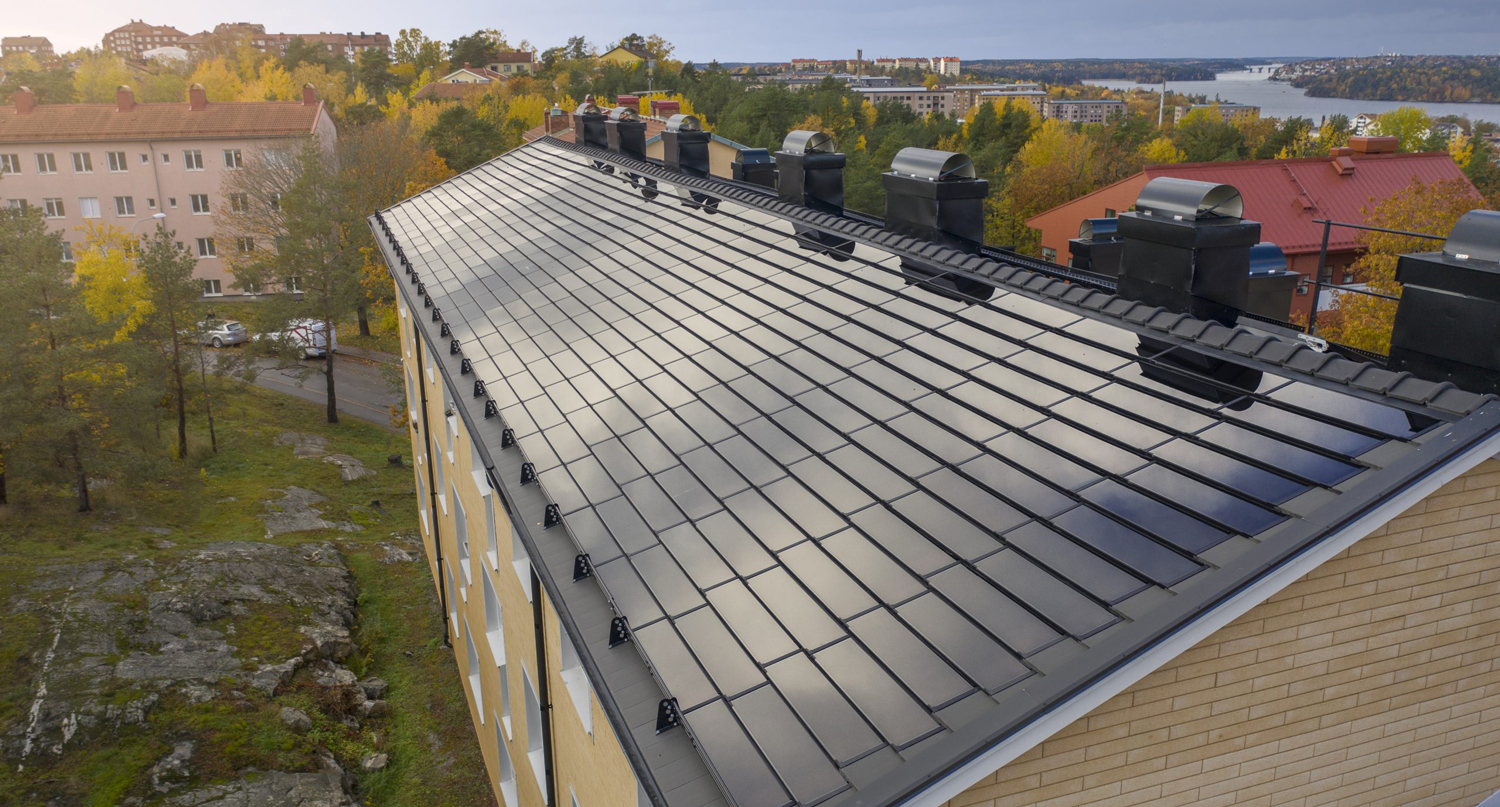
Frequently asked questions about photovoltaics - answers to your concerns
Usually not! If the panels follow the shape of the roof or facade, if you put solar panels on the ground to a moderate extent, or if your house is outside a zoning area - then in most cases you don't need a building permit, unless the house is protected as a cultural monument. But always check with your local planning and building office to be sure.
A solar panel consists of cells made of semiconductor materials that generate electric current when hit by sunlight. The cells are assembled into panels that can be placed on roofs and facades or on the ground.
For the electricity from the solar panels to be used in your house, it is passed through an inverter. This is a circuit that converts the direct current from the cells into the kind of 240 V/50 Hz alternating current that ordinary electrical appliances need to work. Inverters can also be used with batteries that store the electricity your panels produce.
Many factors determine how effective a solar panel solution will be. The geographical location of the house, the slope and orientation of the roof, whether it is shaded by surrounding trees or buildings - and, of course, its size. Generally speaking, solar panels work well on almost any roof, just with slightly different efficiencies. "Difficult" roofs may need slightly more panels to give the same yield as an ideal roof. The best performance is achieved with a slope of 35-45 degrees on a south-facing roof. However, to maximize your own use of electricity throughout the day, it may be better to place the panels in an east/west direction - we will help you choose the right one for your specific conditions.
As a rule of thumb, 1 kW panels (about 5 square meters) provide between 800 and 1100 kWh per year. Many residential installations tend to have between 40 and 80 square meters of solar panels of 8-16 kW, which then provide between 8000 and 16000 kWh per year. This compares to a normal house with a family of four consuming in the order of 5000 kWh of household electricity per year, excluding hot water and heating.
No, the solar panels do not generate electricity at night, but with battery storage in the system, you can move the surplus generated during the daylight hours to the evening and night. This means that you can become more or less self-sufficient in electricity during the summer months, depending on how the system is designed. Even without a battery, you save money because you can get paid for the surplus energy produced during the day.
Snow on the panels stops most of the electricity production, but there are usually not many days during an average winter that the snow remains. The steeper the slope of the roof and the panels, the less you are affected by the snow.
It depends a lot on the evolution of electricity prices and how you finance the investment, but a modern solar energy system is usually expected to pay for itself in as little as 8-12 years.
How well it pays off depends on how much power your panels provide and how much battery capacity is needed to fully balance demand. Security is also an important factor to consider in this context, with the possibility of having your own electricity for your hot water, stove, computer and TV even if there is a power cut in the neighborhood - or if in the future it becomes necessary to turn off electricity supplies at certain times if there is a lack of capacity during peak loads.
It usually takes around a week to install solar panels, depending on the size of the installation. Then it can take a few weeks for the grid company to come and check that they can cut the power properly - only then can production start.
How much you can get paid varies between different electricity trading companies and subscription types. We are fully aware of the current situation and will help you find a solution that maximizes your compensation.
Maintenance is minimal, but you may want to check them a couple of times a year to make sure no damage has occurred and that you are getting the maximum output from your system. The electricity production lost when they are covered in snow is moderate, and it is much worse if you scratch or crack a panel by shoveling on the roof.
Only trained personnel and companies with electrical qualifications can install solar panels. The installation company must also be registered with the Electrical Safety Authority. A grid-connected photovoltaic system is considered a high-voltage system, which may affect your home insurance. The property owner is ultimately responsible for their electrical installation, including that the installation is carried out correctly and safely by an authorized installer. If you choose Provektor as your supplier, you can rest assured that this is the case.
You can check whether an installation company is qualified with the Electrical Safety Authority.
Curious about what else we can help you with as an individual?
